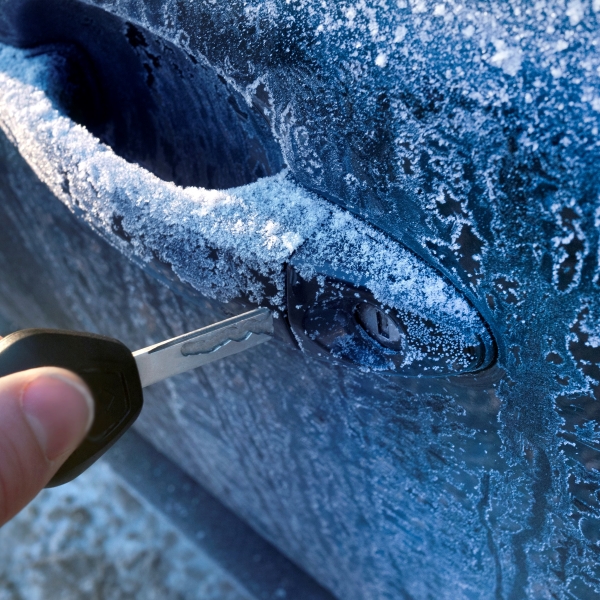Dealing with Cold Weather
Dealing with Cold Weather

We are set to experience single digit temperatures across Western and Central New York this week as cold weather makes its return to the area. AAA prepares for call volume to pick up on cold mornings. To avoid long hold times amid winter weather with high call volume, members can request road service via the free AAA mobile app or AAA.com.
Did you know that a car battery loses a third of its power in freezing temperatures? Why? Because as the air outside cools, the oil in the car thickens making it harder to turn the engine over.
You may have a battery problem if the starter motor cranks the engine slowly or the Battery/Charging warning lamp is illuminated. Another weak battery indicator on older cars is dim incandescent headlights, particularly at idle. However, not every failing battery reveals itself through obvious symptoms.
To avoid being stranded by a battery problem, have the battery inspected at every oil change to make sure the cable connections are clean and tight, and the hold down hardware is secure. Once a battery reaches three years of age, have it tested annually. The test will identify if the battery has deteriorated to the point where replacement is recommended to prevent an unexpected failure. In most areas, members can call the AAA Mobile Battery Service to have a battery tested and replaced (if necessary) at their home or work.
Prepare your vehicle for the cold weather:
- Carry an emergency kit equipped for winter weather. The kit should include a cellphone charger, sand or kitty litter, a small shovel, flashlight, an ice scraper, jumper cables, a blanket, gloves or mittens and snacks and water.
- Replace worn windshield-wiper blades. If your climate is especially harsh, purchase one-piece, beam-type or rubber-clad “winter” blades to fight snow and ice buildup. Use cold-weather windshield washer solvent and carry an ice scraper.
- Inspect your tires. Make sure tires have adequate tread depth – at least 4/32” – as worn tires can affect a driver’s ability to stop in slick conditions. An easy way to check for wear is by inserting a quarter into your tread groove. If the top of Washington's head is exposed, the tread depth is less than 4/32" and it’s time to replace your tires. Also, check that your car has a spare tire and keep it properly inflated in case you need it.
- Have your battery tested. A AAA survey found that two-thirds of American drivers have never proactively had their car battery tested. If a battery is more than three years old have it checked by a professional to ensure it is strong enough to endure cold weather. AAA’s Mobile Battery Service offers free battery testing for AAA members.
- Wash and wax your vehicle on warm winter days. To help prevent rust damage, which costs drivers approximately $3 billion every year, thoroughly wash and clean your vehicle prior to the start of winter and apply a coat of wax to protect the finish. During the winter, frequently wash your vehicle (including the undercarriage) to loosen, dissolve and neutralize road salts. Always use a high-quality car wash solution, not a household dish detergent that will strip the wax from your vehicle.
AAA’s tips for driving in winter weather:
- Do not tailgate. Normal following distances of three to four seconds on dry pavement should be extended to a minimum of five to six seconds when driving on slippery surfaces. The extra time will provide additional braking room should a sudden stop become necessary.
- Never use cruise control on slippery roads. If your vehicle hydroplanes or skids, you will lose the ability to regain some traction simply by lifting off the accelerator. It will be harder to recover from the loss of traction if cruise control is active.
- Slow down and adjust your speed to the road conditions. Leave yourself ample room to stop. Accelerate, turn and brake as gradually and smoothly as you can.
- Don’t slam on the brakes. If your car begins to skid, continue to steer in the direction you want the car to go. Slamming on the brakes will only make your vehicle harder to control.
- Use extreme caution on bridges and overpasses. Black ice typically forms first in shaded areas of the roadway and on bridges and overpasses that freeze first and melt last. Although the road leading up to a bridge may be fine, the bridge itself could be a sheet of ice.
- React quickly. Watch the traffic ahead and slow down immediately at the sight of brake lights, skidding cars or emergency flashers.